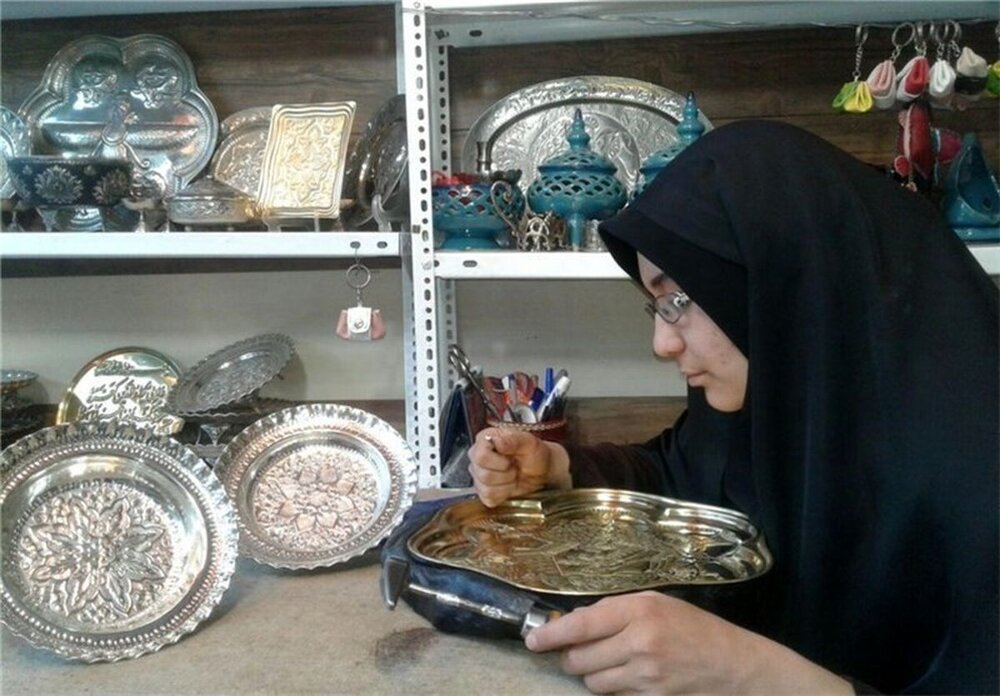Persian handicrafts: Varsho-Sazi

TEHRAN - Varsho is an alloy that consists of copper, nickel, and zinc whose some of its unique characteristics include high luster, high hardness, good ductility, and easy malleability.
The alloy, which entered Iran from Germany and Poland centuries ago, turned into a fascinating material in the hands of craftsmen and artists of Borujerd in Lorestan province. The art-craft of Varsho-Sazi was then formed and Borujerd eventually became registered as the national city of Varsho as its practitioners created artistic, beautiful, and delicate products.
Very little is known about the history of Varsho-Sazi and the findings of this matter are greatly ambiguous and do not provide a clear answer about the beginning of this craft in Iran. However, there are some indications about the art of Varsho in the Seljuk dynasty and later.
However, what is evident is Varsho flourished in Borujerd during the Qajar era. From back then artists of this city gave special shapes to the alloy plates by hammering and bending them and created both applicable and decorative products.
Some of the products that can be listed were tea serving sets, coal samovar, teapot, sugar cube holders, teacups, and small utensils such as forks and spoons, kohl holders, plates, trays, bowls, braziers, water jars, rose water splinters, etc.
Samovars are the most special amongst them. So much so that there is another craft known as Samavar-Sazi or making samovars. It can be said that Borujerd artists have successfully mixed chasing and hammer working and added an aesthetic aspect to these products.
Furthermore, the craft of Varsho has a close connection with other handicrafts such as copper repoussage and metalworking. Ali Minagar, late master Rauf, late master Gharib, Reza Golduz, Mohammad Badavar, Alireza Shaddel, Masha’llah Farokhi are some of the great masters of Varsho craft.
Today in addition to these decorative crafts, new products have begun to be made. Usually, some Varsho products can be found in houses of each Borujerd family and they are considered a valuable part of the dowries of young girls of this city.
Lorestan was inhabited by Iranian Indo-European peoples, including the Medes, c. 1000 BC. Cimmerians and Scythians intermittently ruled the region from about 700 to 625 BC. The Luristan Bronzes noted for their eclectic array of Assyrian, Babylonian, and Iranian artistic motifs, date from this turbulent period.
The region was incorporated into the growing Achaemenid Empire in about 540 BC and successively was part of the Seleucid, Parthian, and Sasanid dynasties.
Lorestan is one of the lesser-known travel destinations in Iran and mainly acts as a gateway to the neighboring Khuzestan province which hosts UNESCO sites of Susa, Tchogha Zanbil, and Shushtar Historical Hydraulic System.
The province is also a region of raw beauty that an avid nature lover could spend weeks exploring, living with a nomad or rural family. Bisheh Waterfall, Snow Tunnel, Poldokhtar ponds, Falak-ol-Aflak Castle, Soltani Mosque of Borujerd, Shapouri Bridge, and Shirez Canyon are amongst tourist sites of the mountainous province.
AFM
